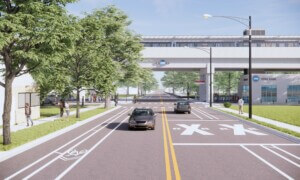In another radical pushback on the congestion-creating, carbon-emitting automobile, the Dublin City Council and National Transport Authority have proposed to ban private cars from entire sections of the city’s downtown core. The capital city of Ireland and prime economic hub ranks tenth globally in terms of traffic congestion, according to a study led by GPS maker TomTom.
The proposed restrictions are part of a more than $165 million improvement plan for transit, cycling, and pedestrians, and a buffer against the city’s present incapacity to accommodate a projected 20 percent increase in commuters to the city center by 2023. In 2014, around 192,000 journeys into the city center took place each weekday during the peak morning period (7am-10am) alone, according to the Dublin City Centre Transport Study.
By 2023, that number will spike by 42,000. In order to “ensure that Dublin develops into a more liveable city, where the impact of traffic is minimized,” say officials, changes will occur along major routes in the city center east of City Hall, west of Trinity College, north of St. Stephen’s Green and south of River Liffey.
The area in front of the college will be converted into a civic space with a greatly expanded pedestrian footpath, while College Green and the north and south quays will be solely accessible by cyclists, pedestrians, and users of public transport. Meanwhile, Suffolk Street and St. Stephen’s Green North will be pedestrianized.
To incentivize commuters to defect from private cars, the city is fortifying its public transportation networks, adding a Bus Rapid Transit System (BRT), upgrading the frequency and capacity of the DART, and running new rail passenger services between Kildare and the Grand Canal Dock area through Phoenix Park Tunnel. Meanwhile, D’Olier Street will be outfitted with a new central median with additional bus stops and segregated cycle lanes, while Westmoreland Street will have wider parks and enhanced cycling facilities.
“The city can only continue to function effectively if we offer those living and working in Dublin, as well as visitors, more choices in how they access and move around the capital,” Owen Keegan, Dublin City Council chief executive, told The Journal. Given the 40,000-strong influx of new residents anticipated by the Central Statistics Office within 16 years, Dublin’s traffic reduction targets don’t have the luxury of hit-or-miss.
At present, 48 percent of journeys into the city center are by public transport, 33 percent by private car, and walking and biking at 16 percent. The Dublin City Development has set a target of 55 percent for public transport, 20 percent by private car, 15 percent by bike, and 10 percent on foot.










